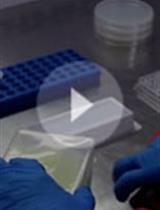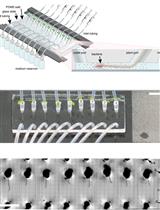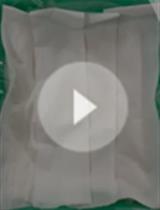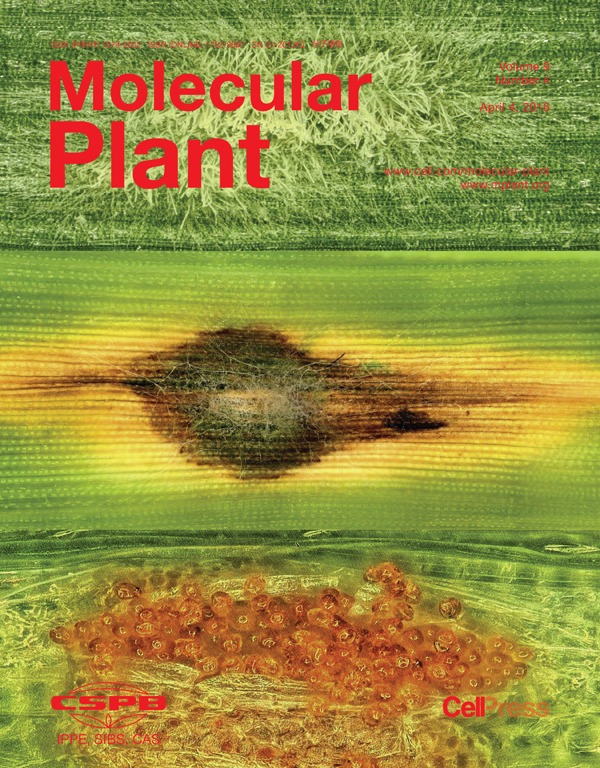- Submit a Protocol
- Receive Our Alerts
- Log in
- /
- Sign up
- My Bio Page
- Edit My Profile
- Change Password
- Log Out
- EN
- EN - English
- CN - 中文
- Protocols
- Articles and Issues
- For Authors
- About
- Become a Reviewer
- EN - English
- CN - 中文
- Home
- Protocols
- Articles and Issues
- For Authors
- About
- Become a Reviewer
Bacterial Growth Inhibition Assay for Xanthomonas oryzae pv. oryzae or Escherichia coli K12 Grown together with Plant Leaf Extracts
Published: Vol 6, Iss 24, Dec 20, 2016 DOI: 10.21769/BioProtoc.2069 Views: 9359
Reviewed by: Marisa RosaAnonymous reviewer(s)

Protocol Collections
Comprehensive collections of detailed, peer-reviewed protocols focusing on specific topics
Related protocols

Quantification of the Composition Dynamics of a Maize Root-associated Simplified Bacterial Community and Evaluation of Its Biological Control Effect
Ben Niu and Roberto Kolter
Jun 20, 2018 10400 Views

Tracking Root Interactions System (TRIS) Experiment and Quality Control
Hassan Massalha [...] Asaph Aharoni
Apr 20, 2019 7279 Views

A Quick Method for Screening Biocontrol Efficacy of Bacterial Isolates against Bacterial Wilt Pathogen Ralstonia solanacearum in Tomato
Heena Agarwal [...] Niraj Agarwala
Nov 20, 2020 5453 Views
Abstract
We performed a growth inhibition assay to test antibacterial compounds in leaf extracts from transgenic rice plants. The assay is based on over-night co-incubation of a defined concentration of colony forming units (cfu) of the respective bacteria together with aqueous extracts of ground leaf tissue.
Keywords: Crop plantBackground
Defense of plants against harmful organisms can be specific against particular pathogen species or groups of pathogens. Aiming at increasing pathogen resistance of crop plants, breeding for resistance against particular diseases can be useful but the ultimate goal is to implement broad-spectrum disease resistance. The rice protein OsJAC1 is a modular protein consisting of a jacalin-related lectin domain predicted to bind to sugar residues and a dirigent domain that might act during coupling of monolignols. This fusion protein is specific to Poaceae and represents a novel type of resistance protein. The protocol described here was used to assess the antimicrobial capabilities of leaf extracts from transgenic rice plants overexpressing the OsJAC1 cDNA (Weidenbach et al., 2016). For this assay, the bacterial lab strain Escherichia coli K12 and the bacterial rice pathogen Xanthomonas oryzae pv. oryzae PXO86, causing bacterial blight, were used.
Materials and Reagents
- Test tubes for bacterial liquid cultures
- Pipettes and sterile tips
- Inoculation loops
- Safe lock reaction tubes (1.5 and 2.0 ml) (e.g., Eppendorf tubes)
- Sterile toothpicks
- 0.2 µm syringe filter (Sartorius, catalog number: 16532 )
- E. coli K12 (standard lab strain)
- Xanthomonas oryzae pv. oryzae PXO86 (received from C.M. Vera Cruz, IRRI, Manila, Philippines)
- Rice plants, approx. 2-3 weeks old (see Weidenbach et al., 2016)
- Sterilized tap water
- Liquid nitrogen
- Peptone (Duchefa Biochemie, catalog number: P1328 )
- Sodium chloride (NaCl) (Carl Roth, catalog number: 3957 )
- Yeast extract (Duchefa Biochemie, catalog number: Y1333 )
- Agar-agar (Carl Roth, catalog number: 5210 )
- Sucrose (Carl Roth, catalog number: 4621 )
- Trisodium phosphate (Na3PO4) (Carl Roth, catalog number: 8613 )
- Calcium nitrate [Ca(NO3)2] (Carl Roth, catalog number: P740 )
- Ferrous sulphate (FeSO4) (Carl Roth, catalog number: P015 )
- HCl (Carl Roth, catalog number: 2607 )
- LB-medium (see Recipes)
- Modified Wakimoto medium (see Recipes)
- Ferrous sulphate (FeSO4) stock solution (see Recipes)
Equipment
- Laminar flow hood
- 28 °C Thermo constant incubator
- 37 °C Thermo constant incubator
- 37 °C Thermo shaking incubator
- -80 °C low temperature freezer
- Spectrophotometer and respective cuvettes
- Mortar and pestle (e.g., Carl Roth, catalog numbers: 1568 and 3831 )
- Autoclave
- Benchtop centrifuge (cooled at 4 °C)
Procedure
Notes:
- All work with bacterial cultures is carried out under sterile conditions using a laminar flow hood. Culture medium for E. coli is LB-medium and incubation temperature is 37 °C. For X. oryzae pv. oryzae (Xoo) modified Wakimoto medium is used and bacteria are incubated at 28 °C.
- Streak bacterial cells from glycerol stocks (see Note 1) stored at -80 °C on appropriate media agar plates and incubate overnight for E. coli (on LB-medium agar plates; incubation at 37 °C) or until colonies get visible for Xoo (after 2-3 days at 28 °C on modified-Wakimoto medium agar plates).
- Day 1
- E. coli
- Inoculate 3 ml liquid LB-medium in a test tube with a single colony picked with a sterile toothpick or an inoculation loop from the overnight incubation plate.
- Shake culture at 210 rpm and 37 °C.
- E. coli
- Day 2
- E. coli
- Harvest bacteria from overnight culture by centrifugation and re-suspend pellet in sterilized tap water.
- Determine the OD600 using a spectrophotometer. Using the measured OD600 value dilute to a calculated OD600 of 1.25 x 10-6 (equivalent to approximately 1 x 103 cells ml-1 when assuming that OD600 = 1.0 is equivalent to approximately 8 x 108 cells ml-1 for E. coli) in sterilized tap water.
- Xoo:
- Scrape off bacteria from modified Wakimoto-medium plates (see Note 2) using a sterile inoculation loop, re-suspend the bacteria in sterilized tap water and measure OD600 in the linear absorption range of the spectrophotometer.
- Dilute to approximately OD600 1.25 x 10-6 in sterilized tap water (see above).
- Plant leaf extracts:
- Snap freeze 0.3 g leaf material from transgenic or wild-type rice plants in liquid nitrogen and grind to a fine powder using a mortar and pestle.
- Transfer the frozen powder to a 1.5 ml safe lock reaction tube and mix with 1 ml sterilized tap water.
- After centrifugation at 16,000 x g at 4 °C in a cooled benchtop centrifuge, the supernatant is transferred to a fresh safe lock reaction tube and mixed 1:2 (v/v) with the bacterial suspension (100 µl supernatant + 100 µl diluted bacterial suspension). Controls consist of bacterial suspension and leaf extracts from wild-type plants.
- The mixtures (100 µl) are plated in triplicates on agar plates of the appropriate media. Plates with E. coli are incubated overnight at 37 °C. Xoo plates are incubated at 22 °C for 4-5 days (see Note 3).
- Day 3
Count the number of cfu on E. coli plates. - Day 6-7
Count the number of cfu on Xoo plates.
Data analysis
Calculate mean value and standard deviation of the number of cfu on the triplicate plates. The number of cfu of the wild-type sample is set to 100%. Test for significant reduction of bacterial growth in sample compared to control by applying Student’s t-test.
Notes
- Glycerol stocks are prepared by adding 750 µl of bacterial culture to 250 µl of sterile glycerol in a safe lock reaction tube; mix well and snap freeze in liquid nitrogen. Store at -80 °C.
- Use freshly streaked out plates (~3 days) to ensure vitality of Xoo.
- Incubation for a longer time at lower temperature ensures better growth of well separated colonies for easier counting.
Recipes
- LB-medium
10.0 g L-1 peptone
10.0 g L-1 sodium chloride (NaCl)
5.0 g L-1 yeast extract
15 g L-1 agar-agar
Dissolve components in distilled water and sterilize by autoclaving - Modified Wakimoto medium
20 g L-1 sucrose
5.0 g L-1 peptone
1.9 g L-1 trisodium phosphate (Na3PO4)
0.5 g L-1 calcium nitrate [Ca(NO3)2]
15 g L-1 agar-agar
Dissolve components in distilled water and sterilize by autoclaving
Afterwards add 1 ml L-1 sterile FeSO4 stock solution (see below) - Ferrous sulphate (FeSO4) stock solution for modified Wakimoto medium
0.5 g L-1 ferrous sulphate (FeSO4)
3.0 ml 2 N hydrogen chloride (HCl)
10 ml distilled water
Sterilize stock solution by using a 0.2 µm syringe filter and store at room temperature in darkness
Acknowledgments
Protocol based on methods described in Weidenbach et al. (2016). DW was funded in the framework of the BMBF funding activity ‘Plant Biotechnology for the future, PLANT 2030’ within the project ‘BarleyFortress’.
References
- Weidenbach, D., Esch, L., Moller, C., Hensel, G., Kumlehn, J., Hofle, C., Huckelhoven, R. and Schaffrath, U. (2016). Polarized defense against fungal pathogens is mediated by the jacalin-related lectin domain of modular poaceae-specific proteins. Mol Plant 9(4): 514-527.
Article Information
Copyright
© 2016 The Authors; exclusive licensee Bio-protocol LLC.
How to cite
Loehrer, M., Delventhal, R., Weidenbach, D. and Schaffrath, U. (2016). Bacterial Growth Inhibition Assay for Xanthomonas oryzae pv. oryzae or Escherichia coli K12 Grown together with Plant Leaf Extracts. Bio-protocol 6(24): e2069. DOI: 10.21769/BioProtoc.2069.
Category
Plant Science > Plant immunity > Disease bioassay
Microbiology > Microbe-host interactions > In vivo model > Plant
Do you have any questions about this protocol?
Post your question to gather feedback from the community. We will also invite the authors of this article to respond.
Share
Bluesky
X
Copy link









